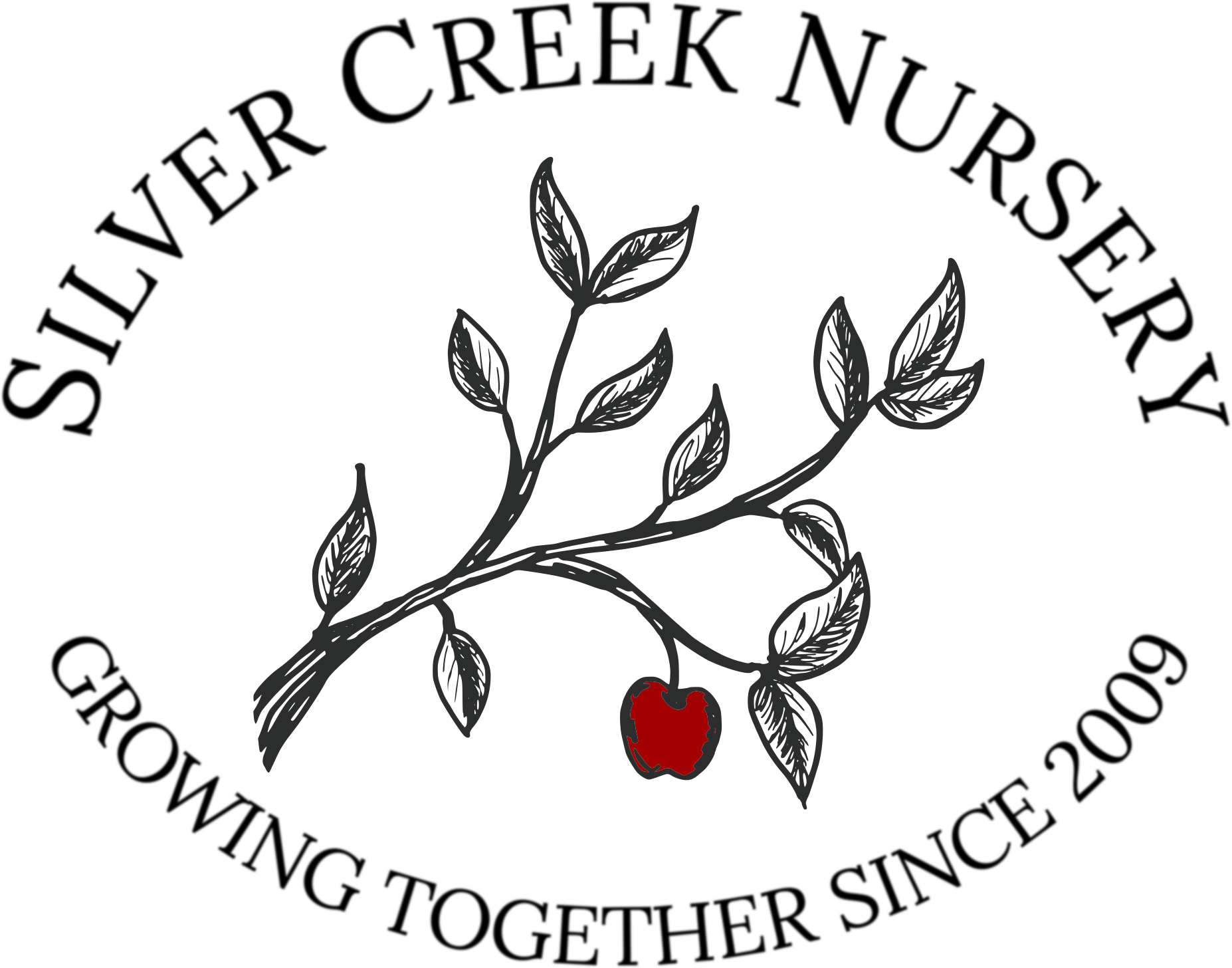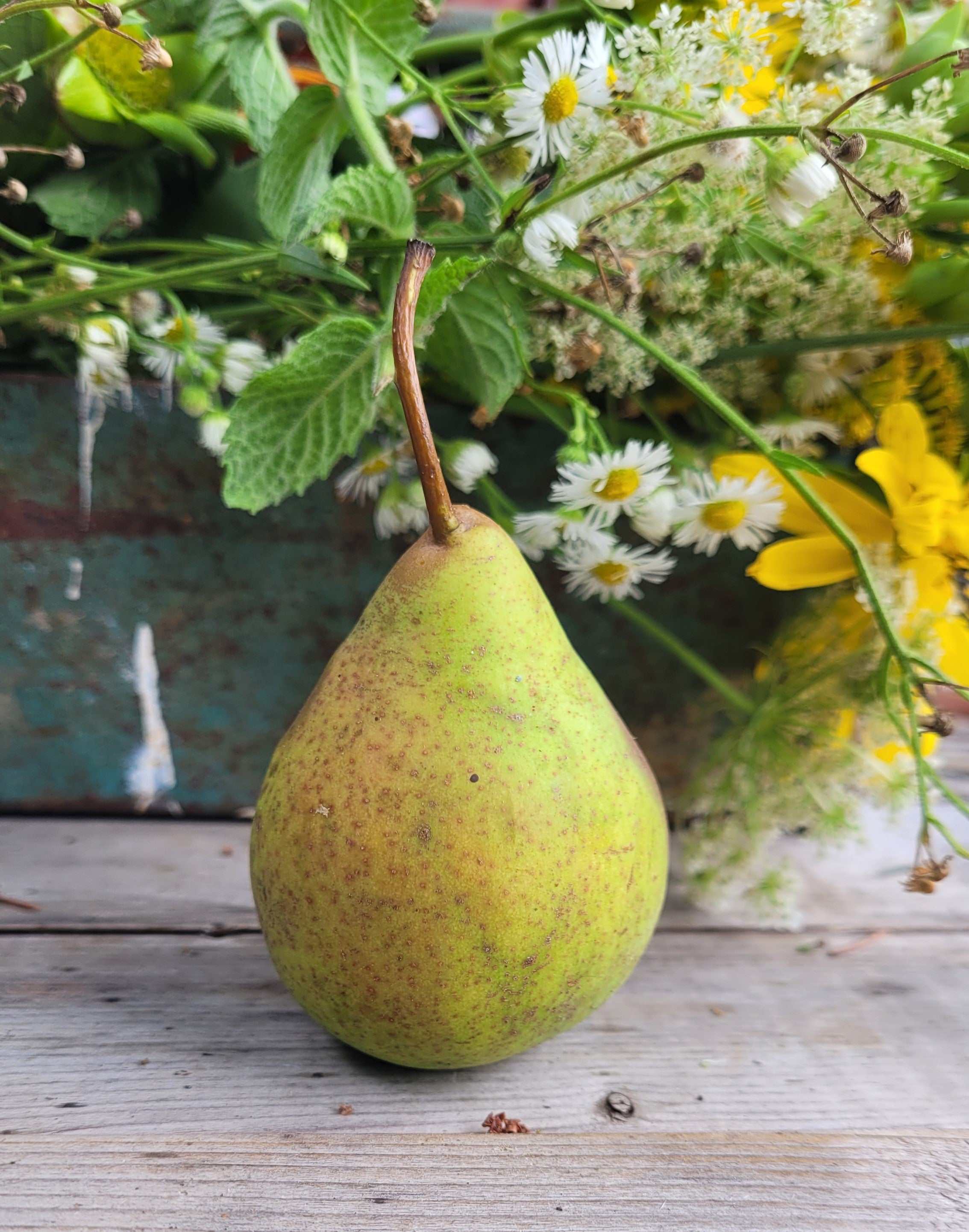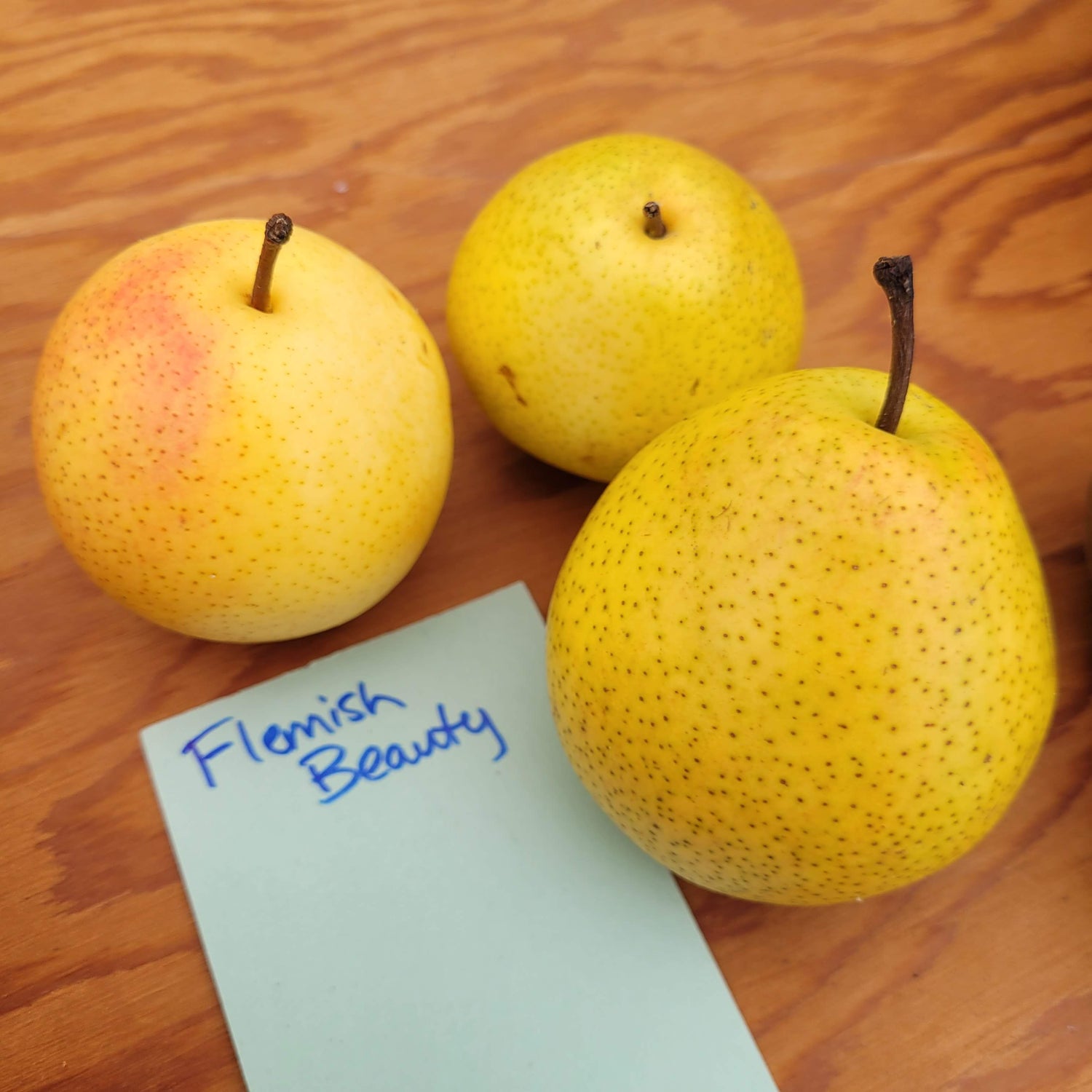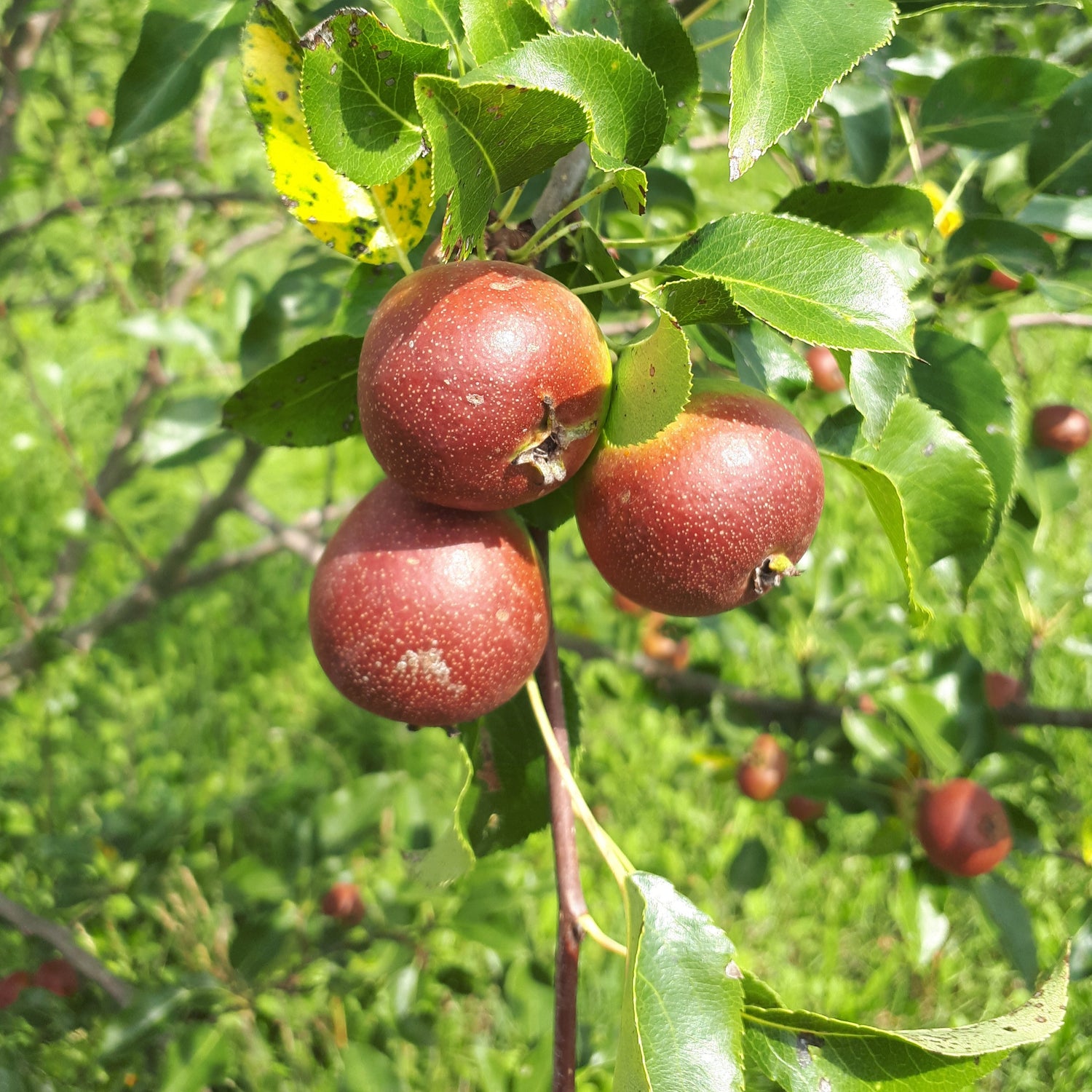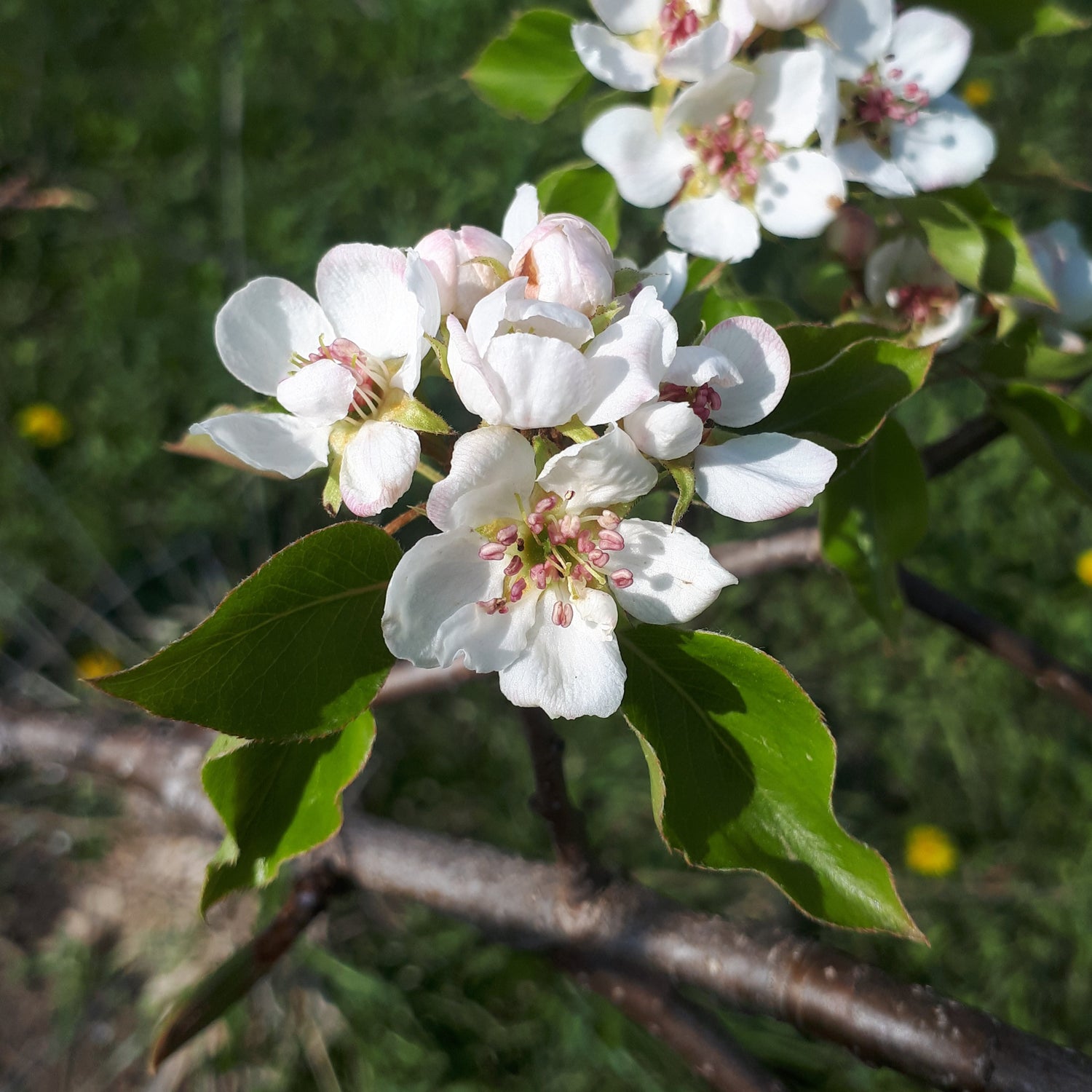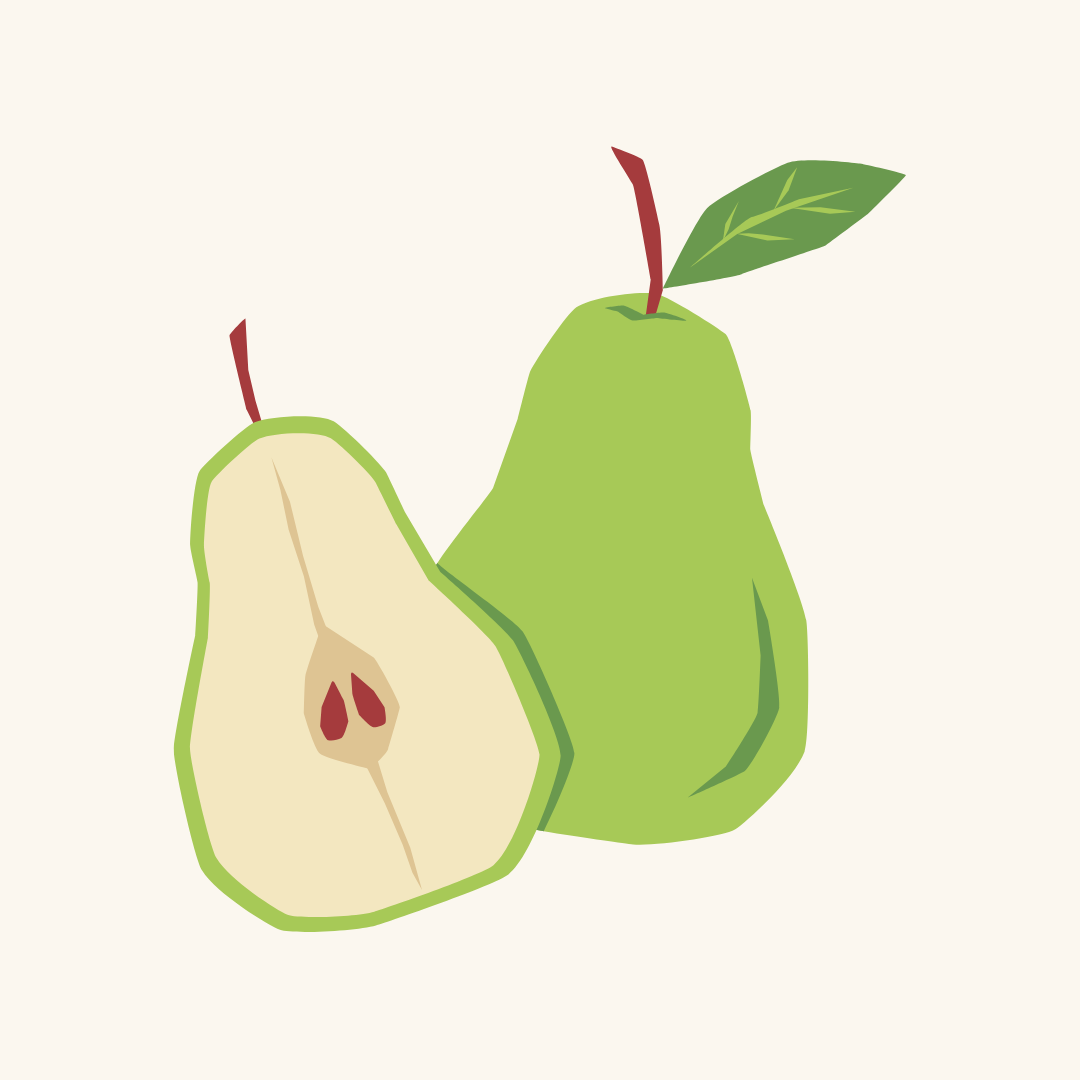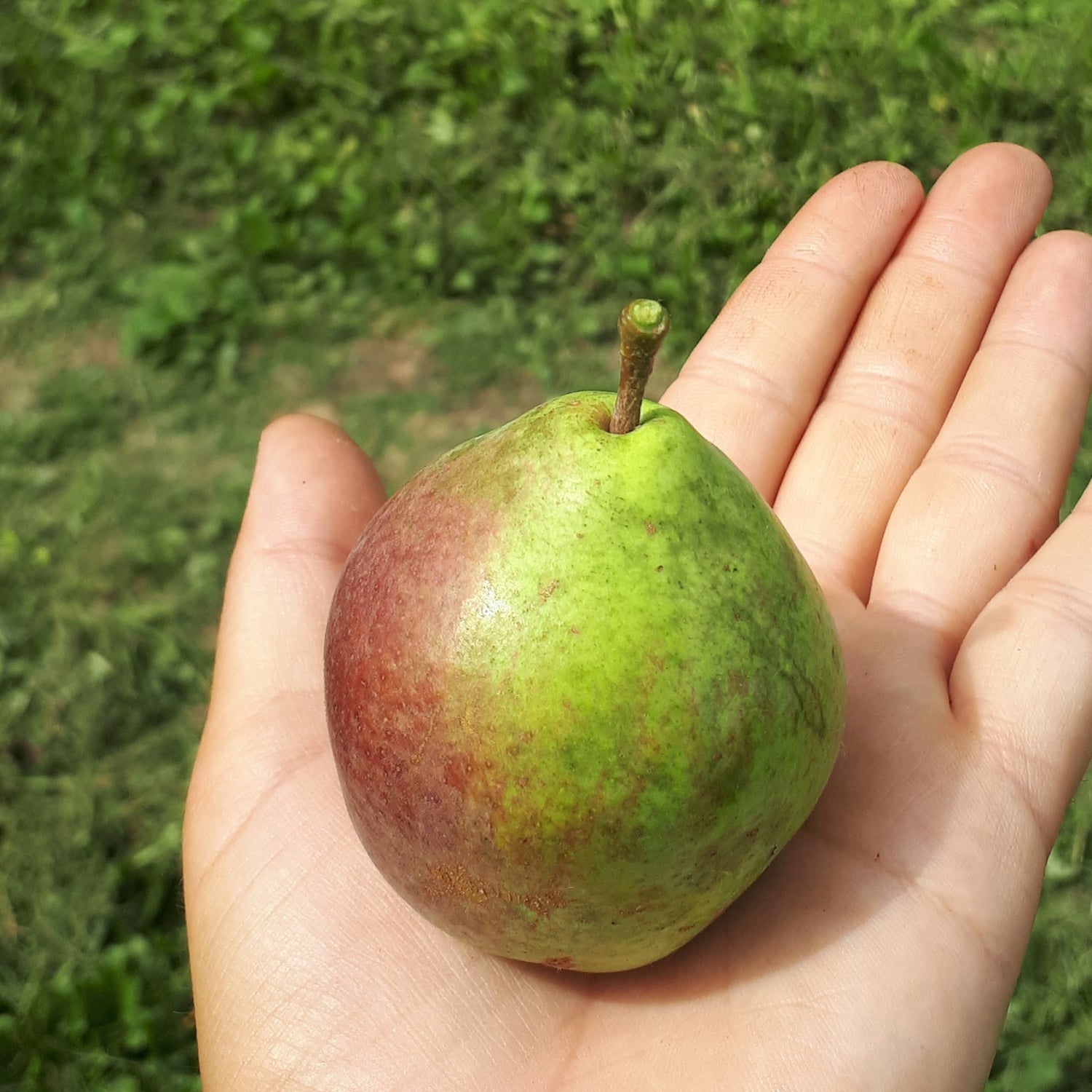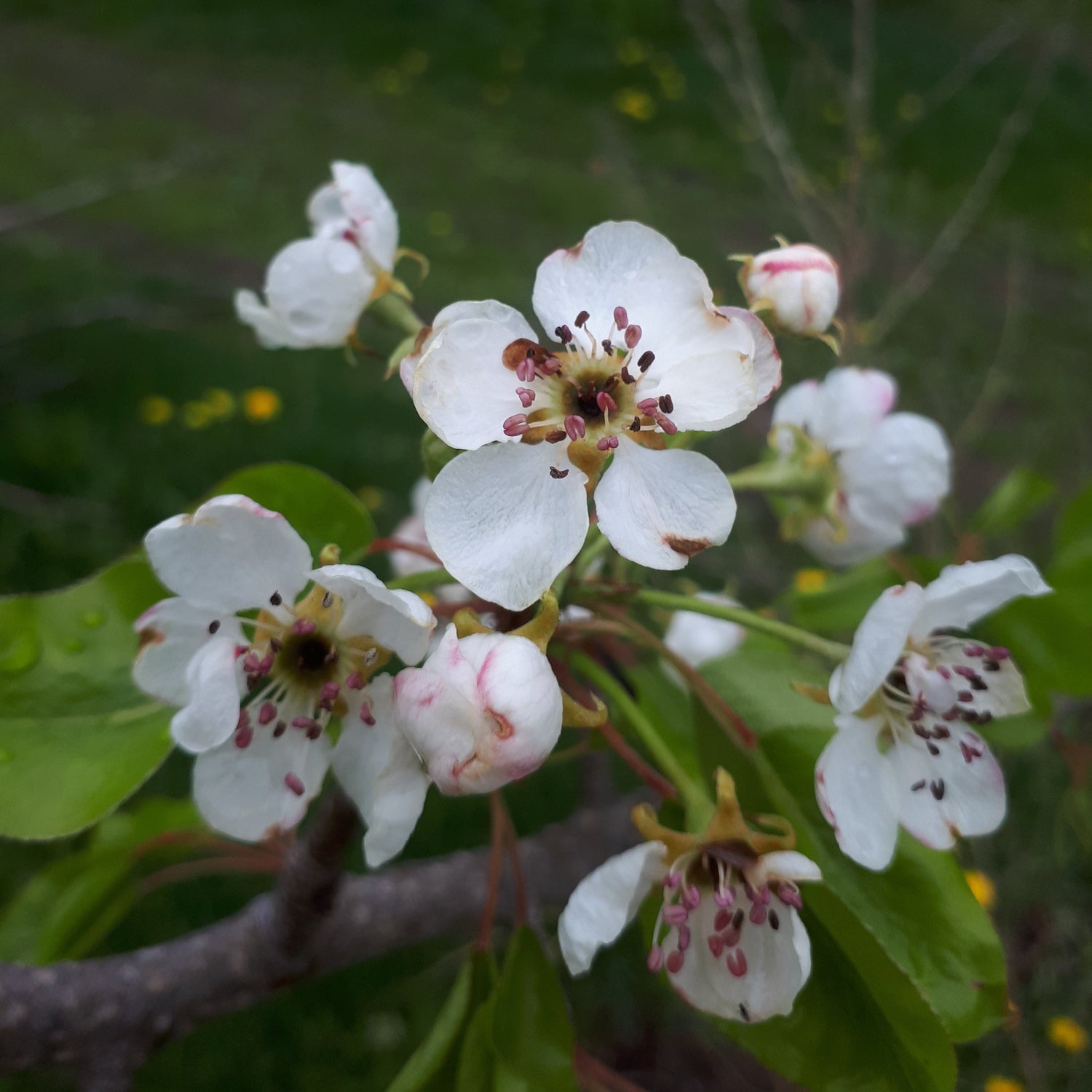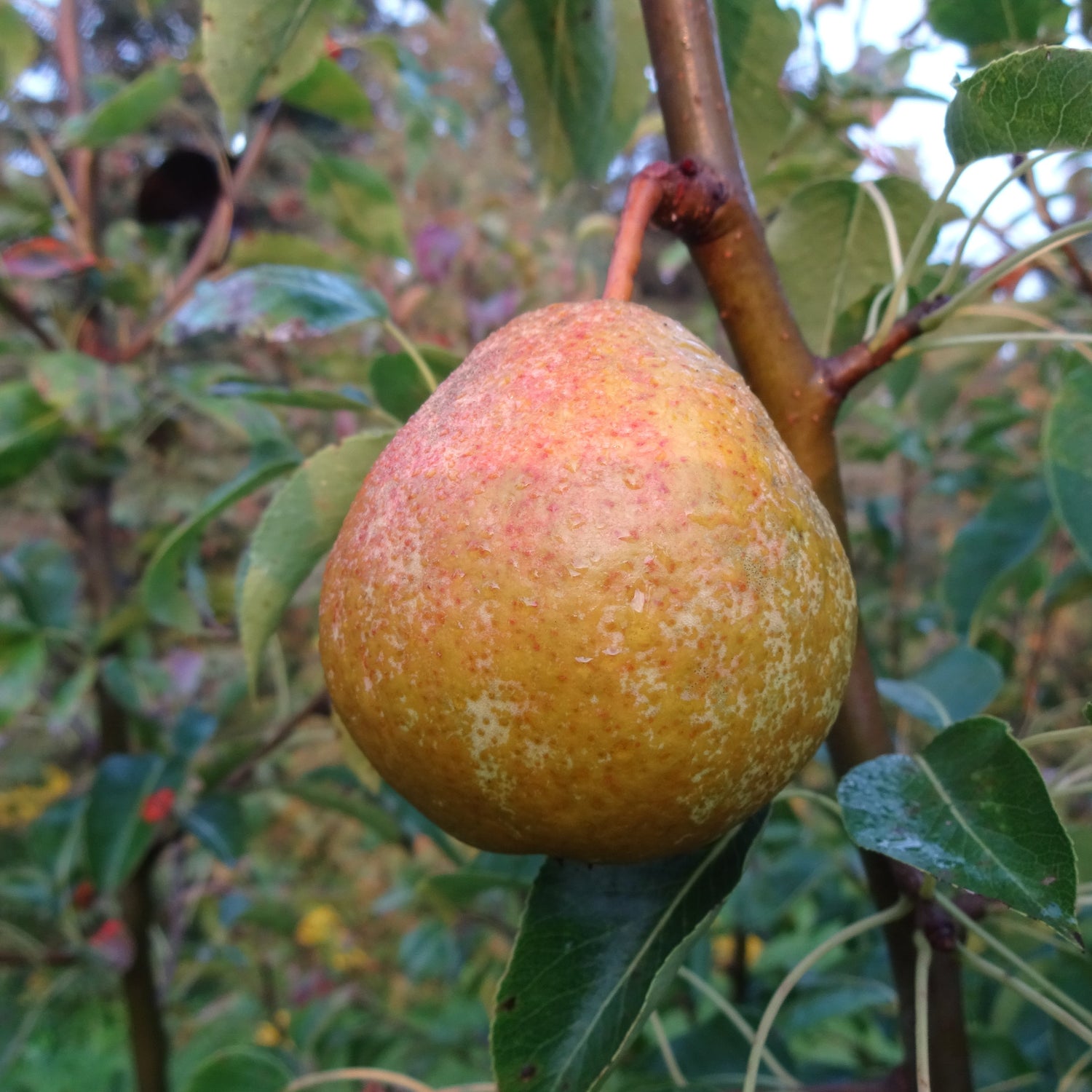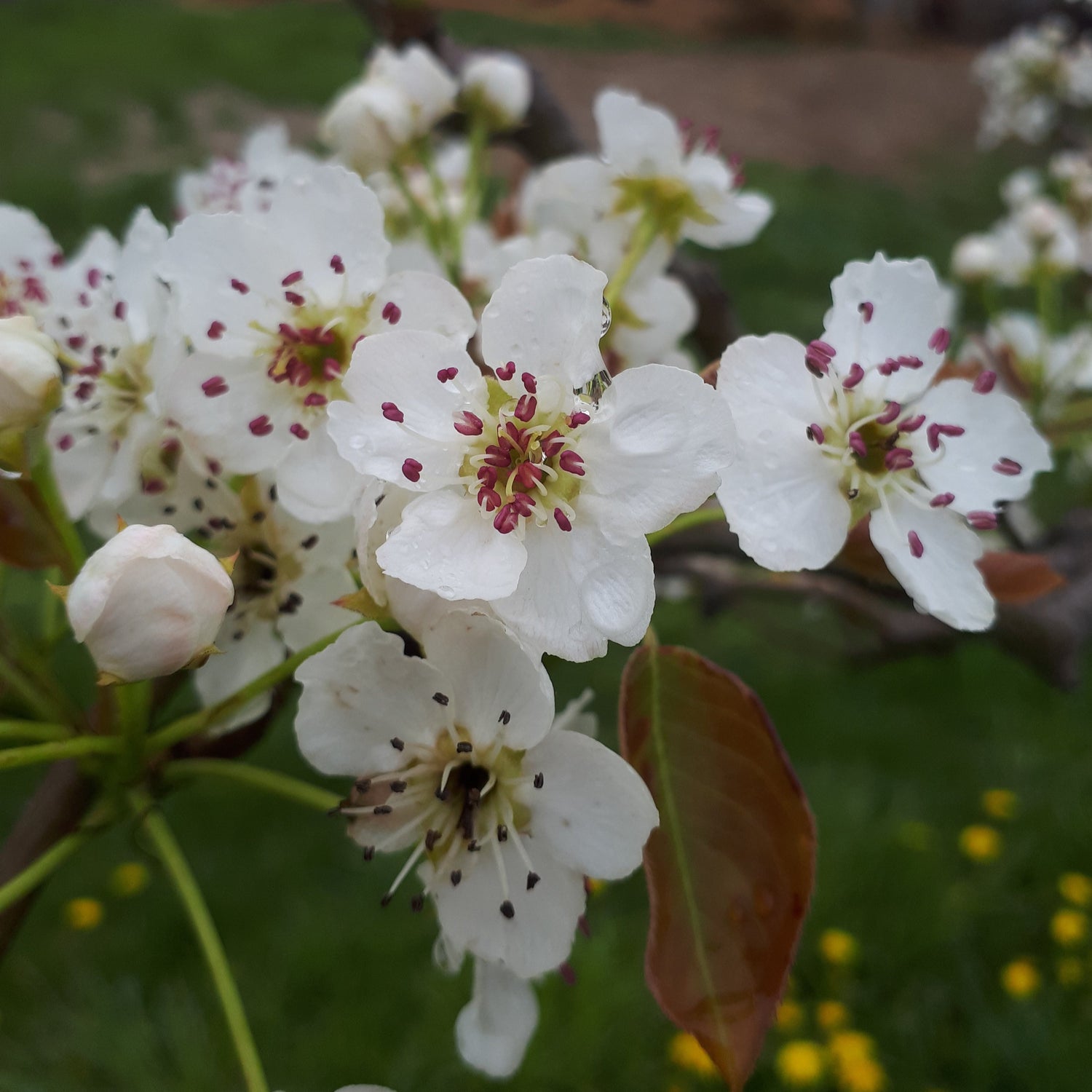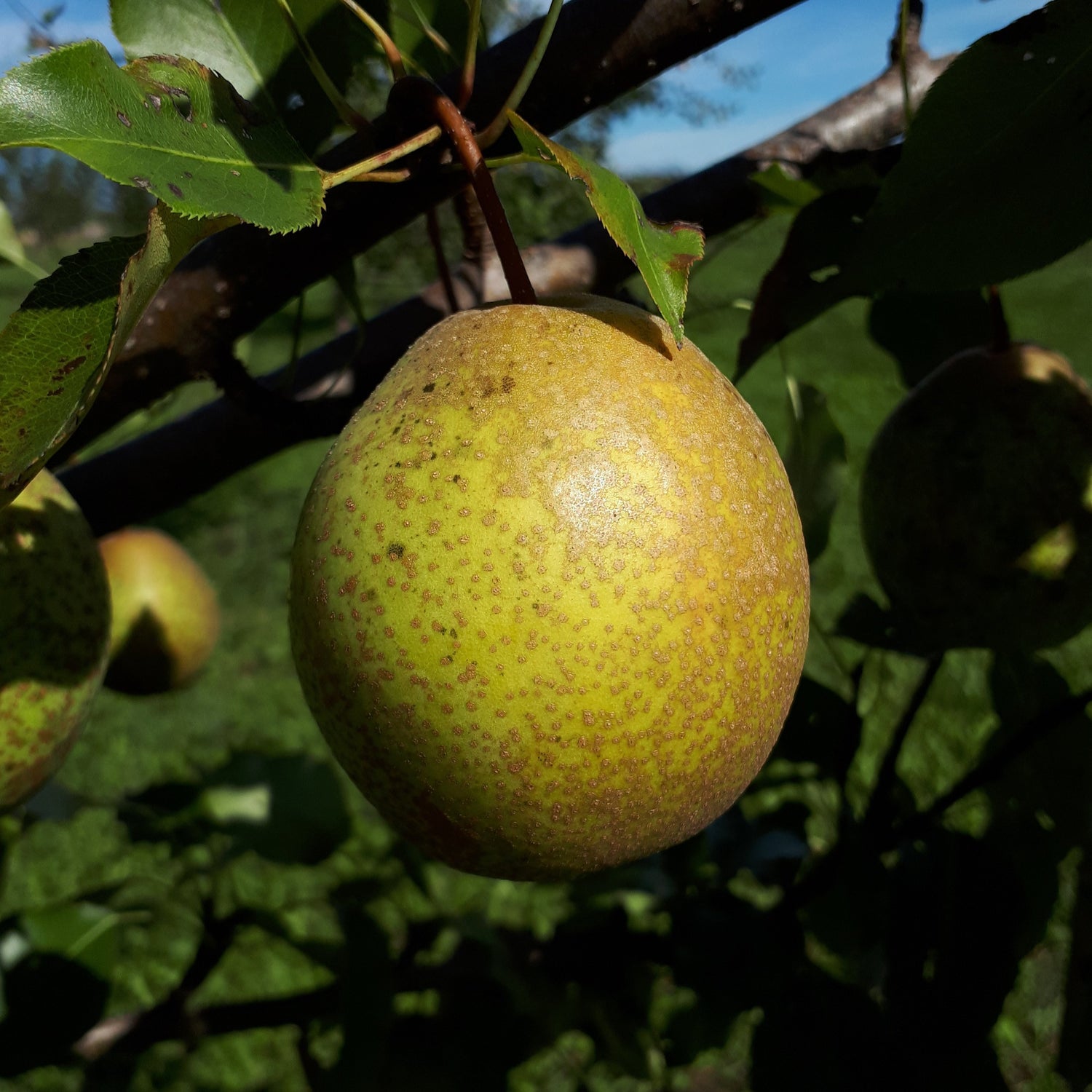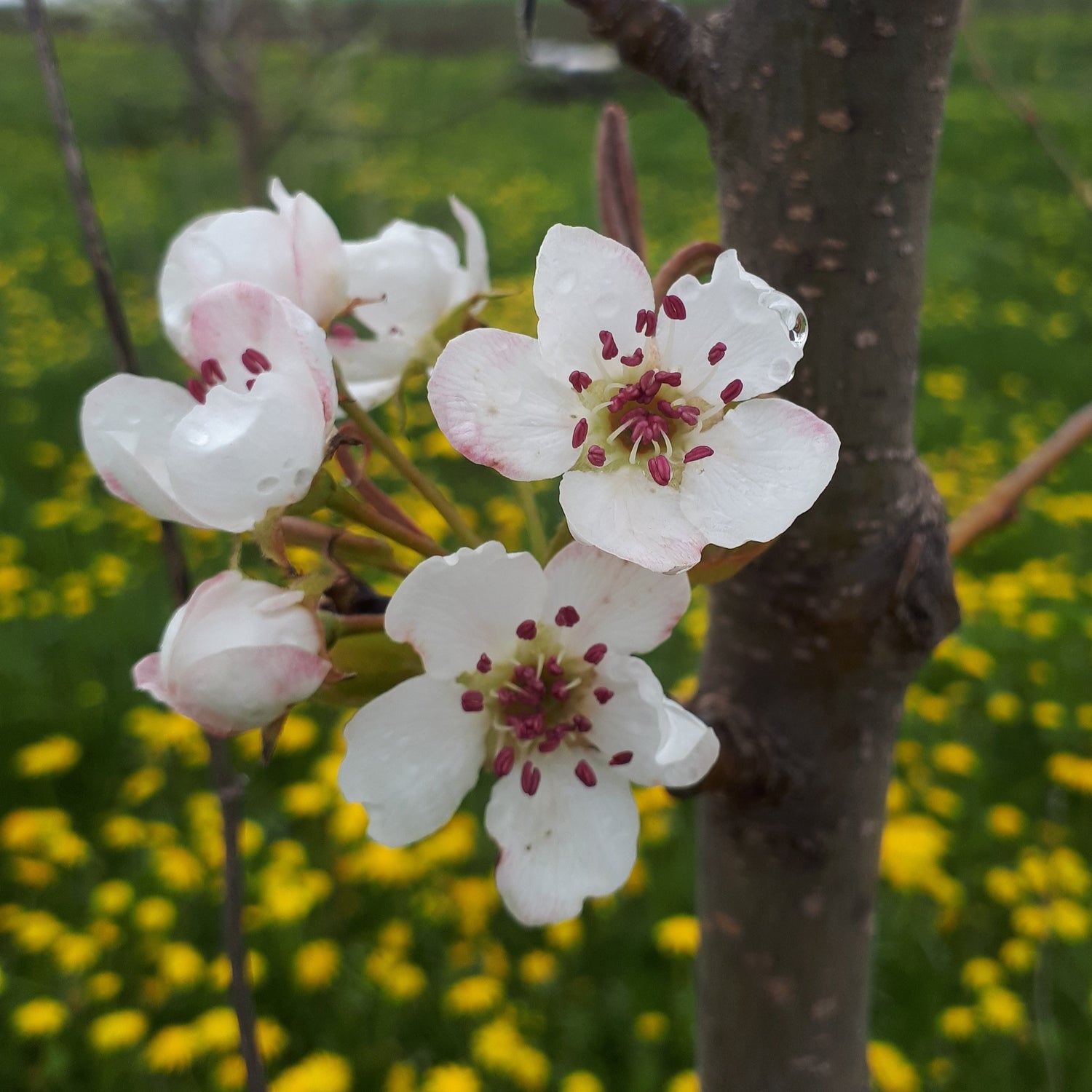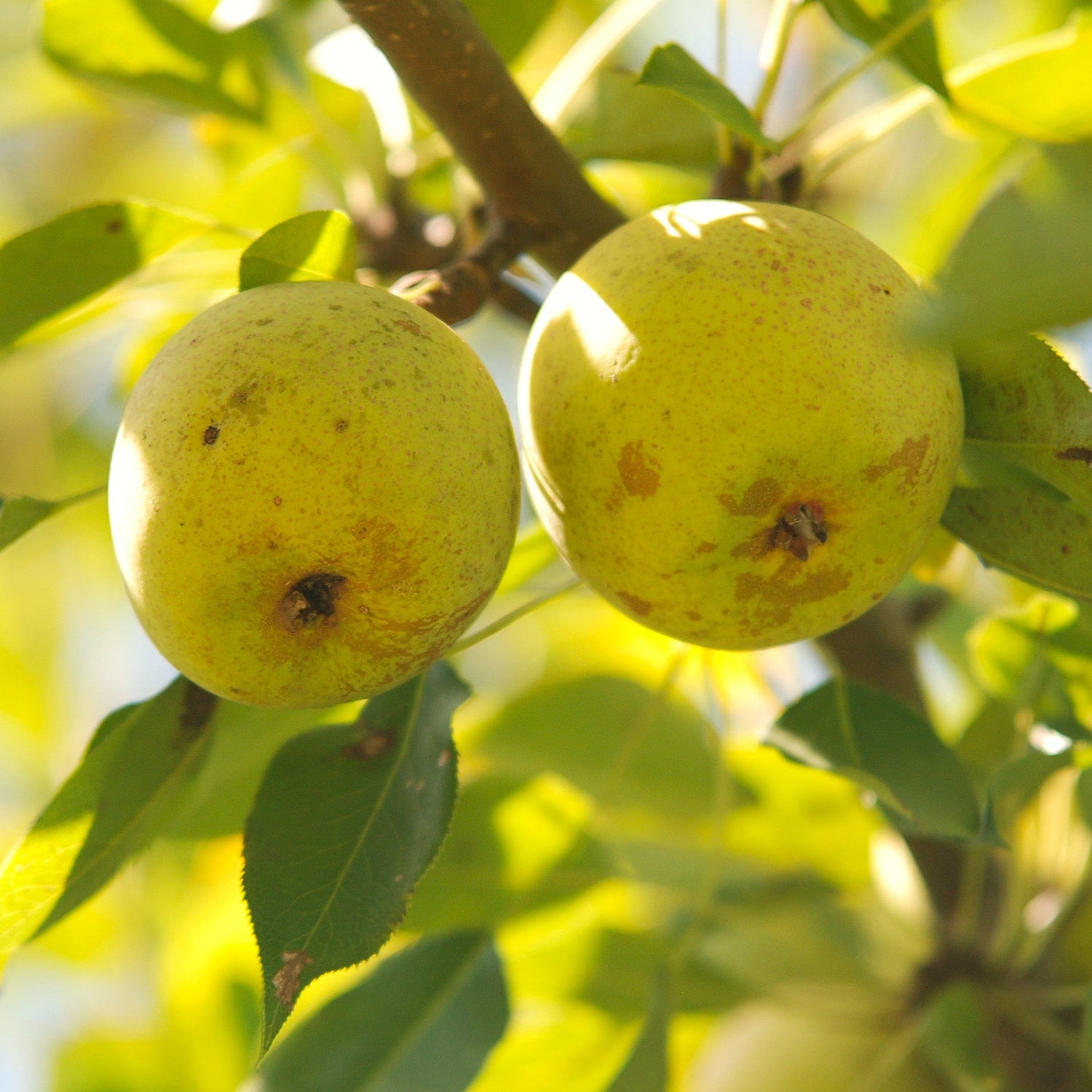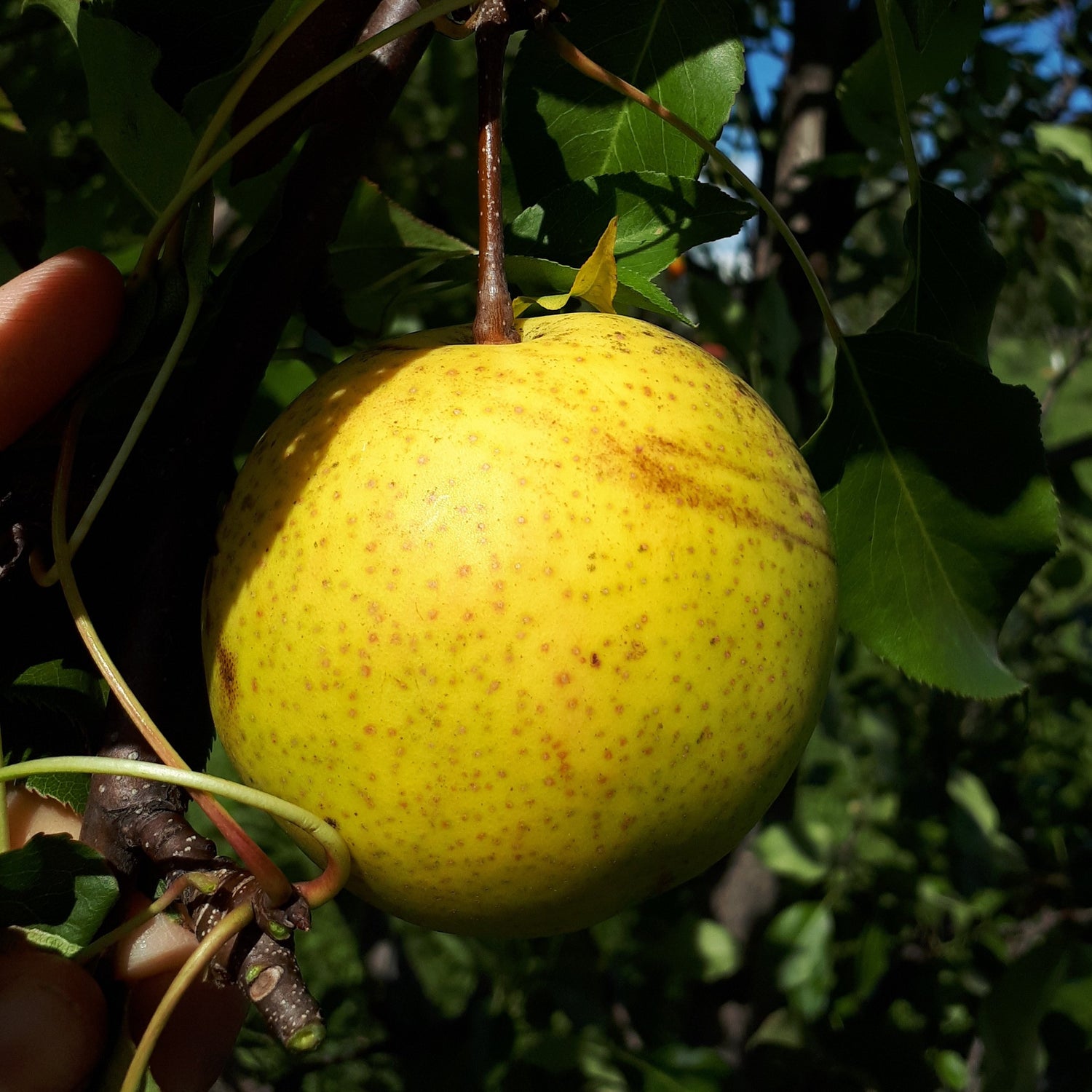Pear Trees
European Pear Trees
Pyrus communis
A pear tree is an excellent addition to the backyard or orchard. Although slow to start bearing, pears are hardy and reliable producers requiring less attention than other types of fruit trees. Each of these varieties requires a pollinator.
Asian Pear Trees
Pyrus pyrifolia
Resembling their more-familiar European cousins, Asian pears are distinct in their texture and mild flavour. The fruit is often larger, and sometimes round in shape like an apple. Each variety requires a pollinator.
Sort by:
5 of 34 products
5 of 34 products
History: Flemish Beauty originated in Belgium in the early 1800s. At one point Flemish Beauty was one of the most common commercial varieties in the US.
Why We Grow It: Flemish Beauty's cold hardiness and good flavour makes this a popular variety. The fruit is large and greenish-yellow without much neck. It is known for being sweet and very juicy, great for fresh eating.
History: Golden Spice was developed by the University of Minnesota and introduced in 1949. It has Ussurian pear (Pyrus ussuriensis) heritage, a separate species from standard European pears (Pyrus communis).
Why We Grow It: Golden Spice is a Ussurian variety with excellent cold-hardiness. The fruit is small and yellow with a sweet, spicy flavour. It is resistant to fireblight.
Species: xSorbopyrus irregularis (Pyrus communis x Sorbus aria), also referred to as xSorbopyrus auricularis although this name is no longer correct
History: Shipova is a unique cross between European pears and Common Whitebeam* (Sorbus aria) which readily hybridizes with many other fruiting plants in the rose family. As a surprise hybrid, the history of Shipova is a little foggy. This cross supposedly appeared, or was perhaps planted, at Bollwiller Castle in France in the 1600s and was called Bollwiller Pear. It was cultivated in gardens in the late 1700s and early 1900s. It may have also originated in Yugoslavia and is popular in Eastern Europe today. Shipova was first brought to the US in 1959 and was imported from Yugoslavia. Today, it appears to remain something of a novelty in North America.
Why We Grow It: Shipova is a truly unique fruit tree and it is a shame that it is not grown more commonly. They are quite cold hardy and relatively disease-resistant. The trees produce clusters of small, round fruit that resemble pears. They are dense and crisp with a sweet flavour reminiscent of tropical fruits.
*Many places list Shipova as a cross between European pears and Mountain Ash. More precisely, the genus Sorbus is the Mountain Ash genus and the specific tree that is the parent of Shipova is the species Sorbus aria, commonly known as Common Whitebeam
History: Summercrisp pears were developed by the University of Minnesota in an effort to create a cold hardy pear. They were successful in creating a hardy and delicious pear, releasing the variety in 1985. Its name is derived from the fact it ripens in summer (very early for a pear!) and that it is great right off the tree when still crisp.
Why We Grow It: Summercrisp performs amazingly in our test orchard, producing lots of freckled beauties that ripen uniformly and hang well on the tree. This early cold-hardy pear has a really sweet, pleasant flavour and is not gritty or dry. The fruit are average-sized with yellow skin and red blush. For optimal eating they should be picked before fully ripe and stored in the fridge until eating. This variety deserves to be more widely planted.
History: Luscious was developed at South Dakota State University as a cross between Ewark and South Dakota 31 in 1954. This goal was to create trees suitable for areas like the Northern Great Plains. Luscious was introduced in 1973, likely selected for its cold-hardiness and excellent flavour.
Why We Grow It: Luscious produces small to medium yellow fruits with an attractive red blush. The fruit is quite sweet, great for fresh eating and cooking/baking! This is an excellent option for fans of Bartlett who are looking for a versatile and cold hardy variety! Luscious also has value as an ornamental tree, producing white blooms and glossy green leaves that turn a nice red in the fall.
Collections
Pyrus pyrifolia
Asian pears are wonderful low maintenance trees! They are regular, prolific producers in our test orchards. Asian pears, sometimes called Apple Pears, are crunchy and sweet, with a mild flavour. While some pears are partially self fertile, we recommend planting at least two different cultivars for reliable pollination; European and Asian pears do cross pollinate.
